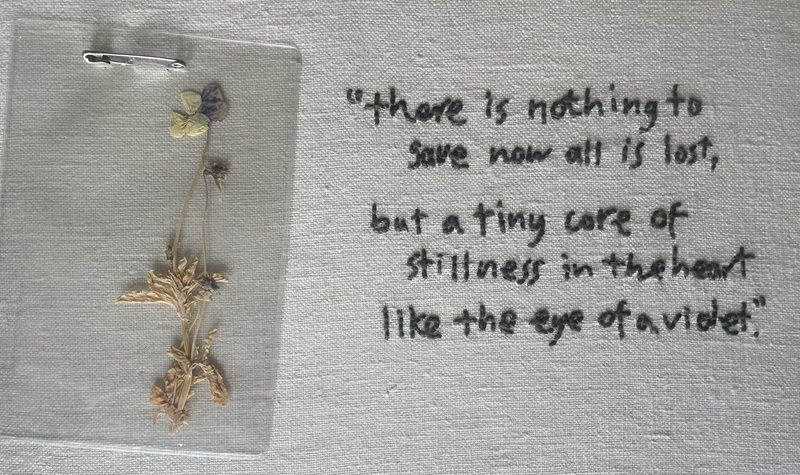Top 10 Pollinator-friendly Plants for Different Situations resource launched
 In mid-April 2023, the All-Ireland Pollinator Plan released a new free resource: ‘Top 10 Pollinator-friendly Plants for Different Situations’ developed in collaboration with Dr Noeleen Smyth (School of Agriculture and Food Science of Horticulture). The plants selected are based on personal observations, the Royal Horticultural Society’s ‘Perfect for Pollinators’ lists, hobbyist websites, and discussions with horticulturalists.
In mid-April 2023, the All-Ireland Pollinator Plan released a new free resource: ‘Top 10 Pollinator-friendly Plants for Different Situations’ developed in collaboration with Dr Noeleen Smyth (School of Agriculture and Food Science of Horticulture). The plants selected are based on personal observations, the Royal Horticultural Society’s ‘Perfect for Pollinators’ lists, hobbyist websites, and discussions with horticulturalists.
The booklet contains 24 lists of native and non-native pollinator-friendly plants that are suitable for different garden and landscape situations including gardens, roundabouts, hanging baskets, and ponds and was launched as part of the ‘How Urban Communities can Help Pollinators’ workshop run by the National Biodiversity Data Centre in collaboration with HX Grow and Dublin City Council.
All-Ireland Pollinator Plan co-founder Dr Una Fitzpatrick said:
“We’re thrilled to be releasing ‘Top Ten Pollinator-friendly Plants for Different Situations’, and would like to thank Dr Noeleen Smyth of UCD Horticulture for developing it with us. One of the main threats to pollinators in Ireland is the lack of food, so it’s really important that our landscape provides plenty of nectar and pollen-rich plants to help them survive and complete their life cycles.”
We're thrilled to launch 'Top 10 Pollinator-friendly Plants for Different Situations'
— All-Ireland Pollinator Plan (@PollinatorPlan) April 16, 2023
Huge thank you to @noeleenbotanics of @UCDHort for helping develop this free guide
24 lists of pollen & nectar-rich plants from meadows to gardens, planters to ponds!https://t.co/wkLiTAUnVJ pic.twitter.com/C08oL2BC3L
The new guide emphasises the importance of using native plants, such as wildflowers, trees, shrubs, and hedgerows, and offers advice on how to cultivate and manage them to support pollinators. The guide also recognises the value of non-native ornamental plants in diverse settings, including coastal areas, acid and alkaline soils, urban containers and green roofs.
Each list of plants is accompanied by guidance on cultivation and maintenance, as well as anticipated flowering periods. The guide aims to be a practical resource for anyone interested in cultivating pollinator-friendly plants, whether on a meadow, in a garden, or even in a window box.
Pollinators, such as bees, butterflies, moths, and hoverflies, play a critical role in sustaining the health and productivity of ecosystems. However, their populations have been declining in recent years due to several factors, such as habitat loss, climate change, and pesticide use. Planting pollinator-friendly plants is a simple but effective way to support the health and diversity of local ecosystems and biodiversity. Providing nectar and pollen for bees, butterflies, and other pollinators can help to ensure the continued health, productivity and sustainability of gardens, parks, and public spaces.”
“We hope this guideline is a useful tool for anyone wanting grow pollinator-friendly plants, whether you have a meadow, a garden, or even just a window box,” said Una Fitzpatrick.
“We can all make a difference to the survival of our bees and pollinating insects by planting pollinator friendly plants in our gardens,” said Noeleen Smyth.
New All Ireland Pollinator Plan & UCD Hort top ten guide. Plants for every garden and landscape situation to support pollinators @PollinatorPlan @UCDHort @ucdagfood @UCDEarth pic.twitter.com/cIMuxpMVaM
— Noeleen (@noeleenbotanics) April 15, 2023
Further information
Top 10 Pollinator-friendly Plants for Different Situations news item
Top 10 Pollinator-friendly Plants for Different Situations booklet [pdf]
Top 10 Ways to Help Pollinators
UCD News and Opinion: UCD Horticulture develops 'Top 10 Pollinator-friendly Plants' guide

